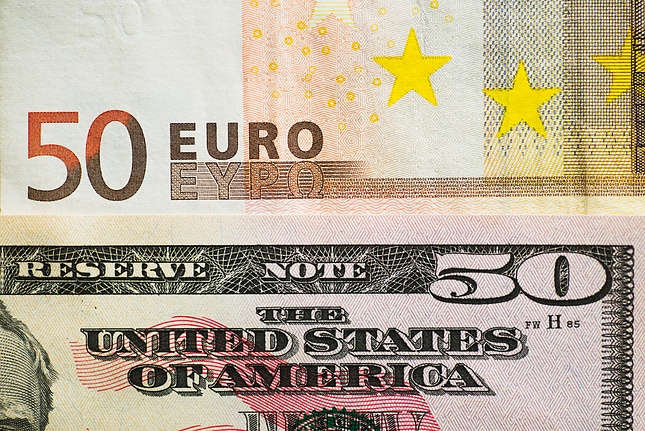Overview: Inflation drivers continue to paint a mixed picture but inflation is likely to head lower through 2023 in US and the euro area. Price pressures from food and freight rates have clearly eased while metal prices have recovered lately. Energy and electricity prices have declined sharply amid warmer weather in Europe. Labour markets remain tight, but wage pressures have showed tentative signs of easing as economies are cooling down. In December, core inflation continued to pick up speed in the euro area, while US CPI showed some easing in underlying inflation pressures. Looking forward, easing financial conditions, less negative growth outlook and the recovery in China continue to pose upside risks to inflation in 2023.
Inflation expectations: Both US and euro area consumer inflation expectations have remained elevated, but off the peak levels. Market-based long-term inflation expectations have remained stable over the past month.
US: On first glance, US December CPI came out close to our and consensus expectations: headline -0.1% m/m (forecast 0.0%) and core +0.3% m/m (+0.3%). While core services inflation picked up more than expected (0.5%; from 0.4%), the uptick was driven by faster shelter and health care inflation, while broader wage-sensitive inflation cooled. The contribution from core goods CPI was slightly less negative than in November, but the normalizing consumption will likely continue pushing prices gradually lower in the coming months. Energy prices also declined, and food price inflation continues to ease. Overall the early signs of easing wage and core services inflation ease the pressure on the Fed to continue hiking rates aggressively in the spring.
Euro: While markets cheered another marked decline in headline inflation to 9.2%, the same cannot be said for core inflation which reached a new record high of 5.2% in December. For the time being, lower energy prices and base effects, as well as government interventions are pushing down headline inflation. However, with a tight labour market and still elevated selling price expectations, high core inflation will likely remain a worry for ECB for some time. In a positive development, consumer inflation expectations and high-frequency wage growth measures have eased a bit lately.
China: CPI increased from 1.6 % y/y to 1.8% y/y in December and CPI ex. food was unchanged at a low 1.1%. PPI increased to -0.7% y/y from -1.3% y/y.
This publication has been prepared by Danske Bank for information purposes only. It is not an offer or solicitation of any offer to purchase or sell any financial instrument. Whilst reasonable care has been taken to ensure that its contents are not untrue or misleading, no representation is made as to its accuracy or completeness and no liability is accepted for any loss arising from reliance on it. Danske Bank, its affiliates or staff, may perform services for, solicit business from, hold long or short positions in, or otherwise be interested in the investments (including derivatives), of any issuer mentioned herein. Danske Bank's research analysts are not permitted to invest in securities under coverage in their research sector.
This publication is not intended for private customers in the UK or any person in the US. Danske Bank A/S is regulated by the FSA for the conduct of designated investment business in the UK and is a member of the London Stock Exchange.
Copyright () Danske Bank A/S. All rights reserved. This publication is protected by copyright and may not be reproduced in whole or in part without permission.
Recommended Content
Editors’ Picks

Australian Dollar softens despite weak USD, eyes on inflation data
The AUD/USD declined by 0.14% to 0.6495 in Monday's session, driven by selling pressure near the intraday high of 0.6550. Despite the US Dollar's weakness, the Australian Dollar's performance suggests its own underlying weakness.

EUR/USD scrambles to recover lost ground near 1.05
EUR/USD scrambled for higher ground on Monday, clipping back into the 1.0500 handle amid a broad-market relaxing of Greenback bidding as investors step back into a risk-on mood, albeit with limited impact.

Gold turns bearish and could test $2,600
After recovering toward $2,700 during the European trading hours, Gold reversed its direction and dropped below $2,650. Despite falling US Treasury bond yields, easing geopolitical tensions don't allow XAU/USD to find a foothold.

MicroStrategy set to push Bitcoin to new highs after 55,500 BTC acquisition, should investors be concerned?
MicroStrategy revealed on Monday that it made another heavy Bitcoin purchase, acquiring 55,500 BTC for $5.4 billion at an average rate of $97,862 per coin.

Eurozone PMI sounds the alarm about growth once more
The composite PMI dropped from 50 to 48.1, once more stressing growth concerns for the eurozone. Hard data has actually come in better than expected recently – so ahead of the December meeting, the ECB has to figure out whether this is the PMI crying wolf or whether it should take this signal seriously. We think it’s the latter.

Best Forex Brokers with Low Spreads
VERIFIED Low spreads are crucial for reducing trading costs. Explore top Forex brokers offering competitive spreads and high leverage. Compare options for EUR/USD, GBP/USD, USD/JPY, and Gold.